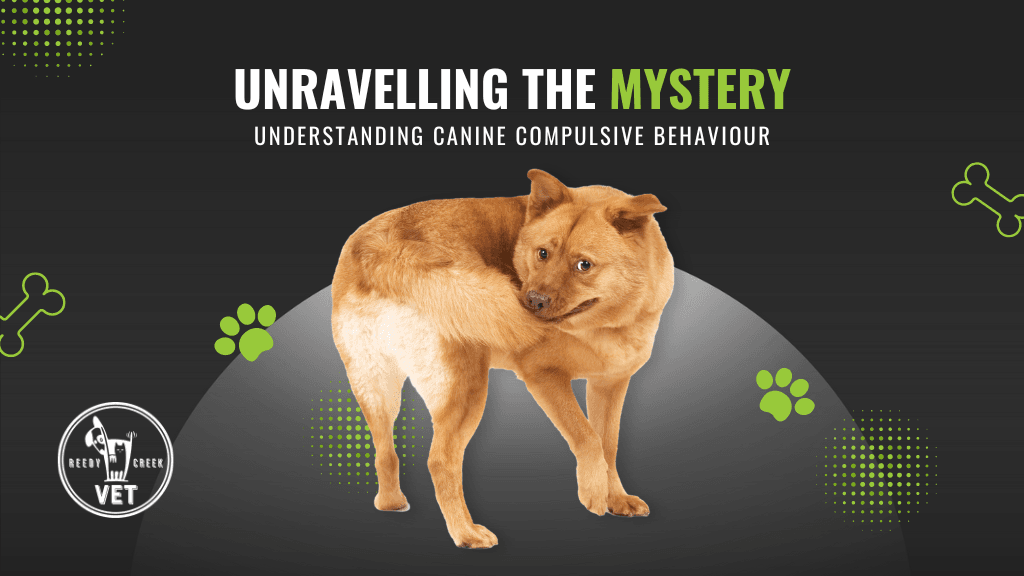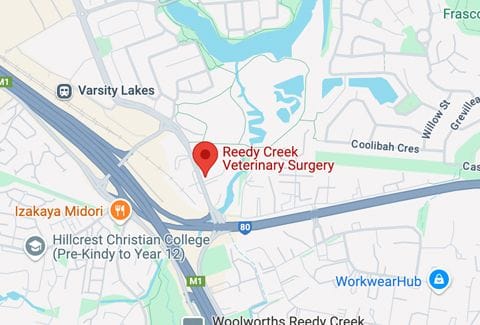Canine Compulsive Disorder: Understanding, Diagnosing, and Treating Repetitive Behaviours in Dogs
)
What is Canine Compulsive Disorder (CCD)?
Canine Compulsive Disorder (CCD) resembles human Obsessive-Compulsive Disorder (OCD), resulting in dogs engaging in repetitive actions that negatively impact their health and wellbeing. While it's difficult to determine if dogs have obsessive thoughts, their persistent behaviours reveal compulsive tendencies. In dogs affected by CCD, these actions escalate, disrupting daily life and affecting both the dog and its household.
Behaviours associated with CCD, though potentially normal in moderation, become harmful when performed excessively. Some common examples of compulsive actions in dogs include:
- Self-mutilation, such as missing fur or raw skin, often focused on the tail, limbs, and extremities
- Escalation of behaviours over time, unresponsive to intervention, and disruptive to normal activities
- Frequent tail chasing, especially if accompanied by injury to the tail, though not all tail-chasers will harm themselves
- Behaviours that may appear during social maturity as playfulness decreases and compulsive tendencies intensify
- Injuries caused by repetitive behaviours, alongside poor physical condition due to excessive motor activity
- A gradual worsening of symptoms over time
Causes of Canine Compulsive Disorder (CCD)
Several factors contribute to the onset of CCD in dogs, ranging from physical discomfort to environmental stress. Identifying these triggers early is crucial to managing and alleviating the compulsive tendencies.
- Pain: Chronic pain, often due to old injuries or medical issues, can lead to compulsive behaviours. Dogs may bite or lick affected areas, or engage in ritualistic actions around activities that cause them discomfort. In some cases, even after the original issue is resolved, compulsive actions persist. This highlights the importance of addressing pain triggers quickly.
- Stress and Environmental Factors: Changes in a dog's environment or routine can be significant stressors, leading to the development of CCD. Disruptions like the daily departure of family members or traumatic experiences can cause anxiety, potentially resulting in obsessive behaviours. For instance, separation anxiety or post-traumatic stress from accidents may provoke repetitive actions as coping mechanisms.
Ensuring a dog has a balanced routine with adequate exercise, mental stimulation, and downtime is essential to avoid both over-stimulation and under-stimulation, both of which can contribute to anxiety and compulsive behaviours. Breeds with high energy levels, such as herding dogs, may be more prone to developing compulsive actions like tail chasing when they lack sufficient outlets for their energy.
- Genetic Predisposition: Research suggests that some breeds are genetically predisposed to certain compulsive behaviours. For example, Doberman pinschers often suffer from acral lick dermatitis and flank sucking, while Cavalier King Charles Spaniels frequently display fly snapping or shadow chasing. Understanding your dog's breed-specific tendencies can help with early intervention.
Diagnosing Canine Compulsive Disorder
Diagnosis of CCD typically begins with a thorough examination to exclude other medical causes for the behaviours. Many symptoms of CCD overlap with other health conditions. For example, excessive licking or biting of paws may point to allergies, infections, or joint problems. Likewise, repetitive behaviours like circling or fly chasing might be indicative of neurological disorders, including Cushing's disease, brain tumours, or canine cognitive dysfunction.
Other potential medical explanations, such as liver disease, should be considered if behaviours like circling or head pressing are present. It's worth noting that head pressing is not associated with CCD but usually indicates severe distress.
The diagnostic process often includes physical examinations, blood work, and imaging to rule out other conditions and confirm a diagnosis of CCD. This comprehensive approach helps ensure that the appropriate treatment plan is developed to improve the dog's quality of life.
Treatment for Canine Compulsive Disorder
Effective treatment strategies include:
- Exercise and Mental Stimulation: Tailoring your dog’s exercise routine to their breed and health needs can significantly reduce the anxiety that drives compulsive behaviours. Mental stimulation is also essential, with activities like puzzle toys, treat-based games, or training exercises helping to distract and engage the dog in positive behaviours.
- Behavioural Interventions: When a dog begins to exhibit compulsive behaviours, it's best to redirect their focus using alternative activities rather than food rewards, which can reinforce the behaviour. Puzzle toys or engaging games can help distract the dog and shift their attention away from the compulsion.
- Medication: In more severe cases, medication such as antidepressants may be necessary to manage CCD. These medications often take several weeks to become effective and must be administered consistently.
It’s crucial to work closely with your vet to develop a treatment plan suited to your dog’s needs. With patience and the right support, many dogs can live happy, healthy lives, even with CCD.
At Reedy Creek Vet, we are dedicated to providing compassionate care for dogs suffering from Canine Compulsive Disorder. Our team will work with you to create a tailored treatment plan that addresses both the symptoms and underlying causes, helping your dog achieve a better quality of life.
| Tags:DogClient InformationPet Behaviour |
&geometry(140x140))

